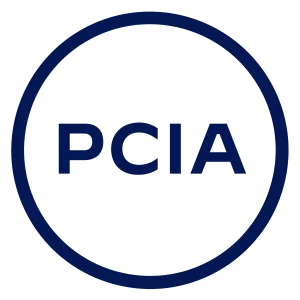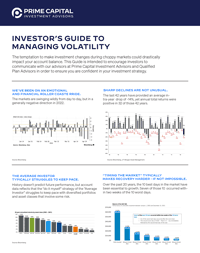In today’s world of fake news and misinformation, it can be challenging to separate fact from fiction. But fear not, PCIA Charleston is here to help provide you with information you can use and rely on when it comes to your own situation. Recently financial advisor Jason Noble hosted a radio show where he tackled common misconceptions and set the record straight on a few financial and retirement myths.
Here are seven common financial myths:
Myth 1: Long-term care insurance is expensive and use-or-lose, but it’s the only option.
Fact: It’s true that traditional long-term care (LTC) insurance is use-it-or-lose-it when it comes to premiums paid out through the years. If you never up needing long-term care, that’s just money gone. Additionally, insurers often increase the premium rates (or decrease coverage amounts) as you reach age 65 or older and become more likely to require a nursing home or long-term care, making the policies less attractive just when you need them most.
However, there are new hybrid life insurance policies which offer consumers options.
Permanent life insurance with coverage for long-term care either built into the policy or added as a rider can provide financial support in the event that you end up needed long-term care in a nursing facility or at home. It’s called hybrid because if you don’t end up needing long-term care, the policy will pay a death benefit—usually tax-free—to your heirs or selected beneficiaries.
The new hybrid LTC policies are definitely worth exploring with a financial advisor who can help you compare policies features and costs from different carriers.
Myth 2: Most baby boomers have enough saved up to retire, or they’ll be okay with Social Security.
Fact: According to a survey conducted by the Transamerica Center for Retirement Studies in 2022, the median retirement savings for baby boomers amounts to around $202,000 per household. That equates to roughly only $8,000 per year (or about $650 per month) if 4% is withdrawn from the account each year—if the value of the retirement savings account continues to be level or higher than $202,000 each year—and if taxes don’t erode spendable amounts.
Social Security does play a role with most retirees when it comes to monthly income. However, according to the Social Security Administration, the average monthly retirement benefit for recipients was $1,781.63 as of February 2023. Alone, Social Security is often not enough for a comfortable retirement lifestyle.
It’s crucial to plan accordingly and make sure you have enough reliable monthly income to cover your retirement expenses, and that your taxes are factored in as part of your retirement equation. Be sure to work with a financial advisor who understands retirement issues rather than an advisor who just focuses on the accumulation side of portfolio management.
Myth 3: All debt is bad.
Fact: Debt can indeed hinder wealth accumulation, but it’s important to understand that not all debt is created equal. It’s crucial to determine what type of debt is right for you and differentiate between “good debt” and “bad debt.” Understanding how debt can work for or against you is key to managing your financial well-being effectively.
Be sure to discuss debt with your financial advisor. As a general rule of thumb, high interest debt on things like credit cards are almost always considered bad whereas mortgage debt may be bad or good depending on your personal situation.
Myth 4: Never discuss financial issues with significant others, friends, family, and coworkers.
Fact: Contrary to popular belief, including your spouse, family and loved ones in financial discussions can be highly beneficial. By providing comprehensive and detailed information to your financial advisor, you can create a more robust and effective financial plan, while collaboration and transparency within your family can lead to better financial outcomes and a shared understanding of your goals.
Remember however, that when it comes to advice or recommendations from friends and coworkers, while you can gain insights and perspectives from others, it’s essential to do your own due diligence. Every individual’s financial situation is unique, so it’s crucial to consult with your own financial advisor to determine how any considerations align with your specific financial plan. Your advisor can provide personalized guidance based on your circumstances, helping you make informed decisions that support your financial goals.
Myth 5: You must have a lot of money to invest.
Fact: Investing in your financial future doesn’t require a significant sum of money. Anyone can start investing, regardless of their income level. There are investment options available for every budget, and getting started early with even a small amount can have a substantial impact on your long-term financial goals due to compounding interest. (Albert Einstein once described compound interest as the “eighth wonder of the world.”)
Myth 6: Social Security benefits begin at age 65.
Fact: You can start receiving your Social Security retirement benefits as early as age 62. However, it’s important to know that the benefit amount you receive at 62 will be permanently lower than your benefit will be if you wait until your full retirement age (FRA).* If you are younger than your full retirement age, you will also have to consider the earnings limitation test if you are still working or decide to return to work before your FRA.
Waiting from your full retirement age until age 70 to start your benefits can result in a higher benefit amount due to delayed retirement credits, which currently add 8% annually to your benefit amount. However, after reaching age 70, there are no further benefit increases.
When you choose to file is an important decision and should be considered as part of your overall retirement plan.
*For those born in 1960 or later, the Full Retirement Age (FRA) is now 67.
Myth 7: The safest place for all my money is in the bank.
Fact: Recently, there were some bank failures, such as Silicon Valley Bank, although the federal government stepped in to make sure bank customers didn’t lose money. And the FDIC (Federal Deposit Insurance Corporation) was created by the Banking Act of 1933 to help protect bank customers during the Great Depression. Today’s FDIC standard deposit insurance coverage limit is $250,000 per depositor, per FDIC-insured bank, per ownership category.
Safety is definitely important, however, the interest paid on bank savings, CDs and money market accounts is still relatively low, even with the ongoing Federal Reserve interest rate hikes we have experienced in 2022 and 2023.
To grow your wealth, it’s important to diversify and allocate your funds utilizing the many financial tools at your disposal. Some portfolio risk, according to your age and comfort level, may be indicated in order to reach your financial goals.
- https://finance.yahoo.com/news/heres-much-typical-baby-boomer-110000774.html
- Transamerica Center For Retirement Studies, 2022
- https://finance.yahoo.com/news/average-social-security-benefit-every-120016509.html
- https://www.ssa.gov/benefits/retirement/planner/whileworking.html
- https://www.fdic.gov/resources/deposit-insurance/faq/
080723002 MKS
This article is provided for general information only and is not to be construed as financial or tax advice. It is recommended that you work with your financial advisor, tax professional and/or attorneys when tax planning.
Advisory products and services offered by Investment Adviser Representatives through Prime Capital Investment Advisors, LLC (“PCIA”), a federally registered investment adviser. PCIA: 6201 College Blvd. Suite #150, Overland Park, KS 66211. PCIA doing business as Prime Capital Wealth Management (“PCWM”) and Qualified Plan Advisors (“QPA”).





